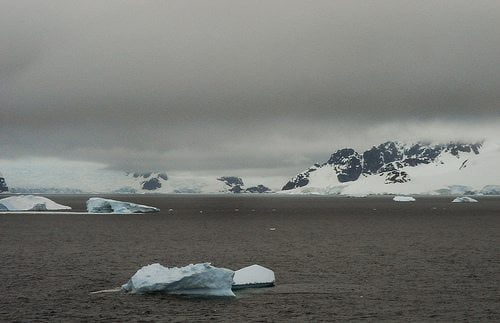

Environment
Antarctic ice loss has doubled in less than a decade
A new radar survey has revealed that in the past three years Antarctica has lost ice at twice the rate it did between 2005 and 2010, with around 160 billion tonnes melting into the sea each year.
Measurements taken from the European Space Agency’s CryoSat-2 spacecraft over three years, now published in the journal Geophysical Research Letters, show that each of the three Antarctic regions – the West Antarctic, the East Antarctic, and the Antarctic Peninsula – are losing ice to the sea.
CryoSat-2 found that, as expected, much of the loss came from West Antarctica, where an average of 134 gigatonnes of ice disappeared each year between 2010 and 2013. The West Antarctic has long been thought by scientists to be the most susceptible sector of the white continent to climate change.
The less vulnerable East Antarctic – which had actually gained ice in 2005-2010 – lost an average of three gigatonnes per year, while the Antarctic Peninsula lost around 23 gigatonnes per year.
Overall, the losses detected by the survey are enough to raise global sea levels by 0.45 millimetres each year.
“Although we are fortunate to now have, in CryoSat-2, a routine capability to monitor the polar ice sheets, the increased thinning we have detected in West Antarctica is a worrying development,” said Professor Andrew Shepherd of the University of Leeds, lead author of the study.
The release of these latest findings closely follows the publication of two studies that detailed the grim prospects of the West Antarctic.
Both papers, published last week, warned that the irreversible collapse of the West Antarctic ice sheet has begun, meaning that a potentially devastating eventual sea level rise of up to 4 metres (13ft) is guaranteed.
The Intergovernmental Panel on Climate Change (IPCC) recently warned that global sea levels could rise by between 26 and 82 centimeters (0.85 to 2.7 feet) by the end of the century if stronger efforts are not made curb climate change.
However, the IPCC’s estimates do not take into account the West Antarctic.
Furthermore, a separate study published earlier this month warned that the East Antarctic, despite previously appearing to be largely immune to warming, may also be at risk.
Scientists found that one small “plug” of ice is all that is stopping the Wilkes Basin, a sub-glacial basin that stretches more than 600 miles inland to the east of the continent, from slipping into the sea. If it did, scientists estimate sea levels would rise by another 3-4 meters (10-13 feet).
Further reading:
West Antarctic ice sheet collapse is now unstoppable
East Antarctic more vulnerable to devastating melt than first feared
Worries over melting of previously ‘stable’ Greenland ice sheet
Melting of Antarctica’s Pine Island glacier may continue for centuries


 Environment9 months ago
Environment9 months agoAre Polymer Banknotes: an Eco-Friendly Trend or a Groundswell?

 Environment11 months ago
Environment11 months agoEco-Friendly Home Improvements: Top 7 Upgrades for 2025

 Features8 months ago
Features8 months agoEco-Friendly Cryptocurrencies: Sustainable Investment Choices

 Features10 months ago
Features10 months agoEco-Friendly Crypto Traders Must Find the Right Exchange




























